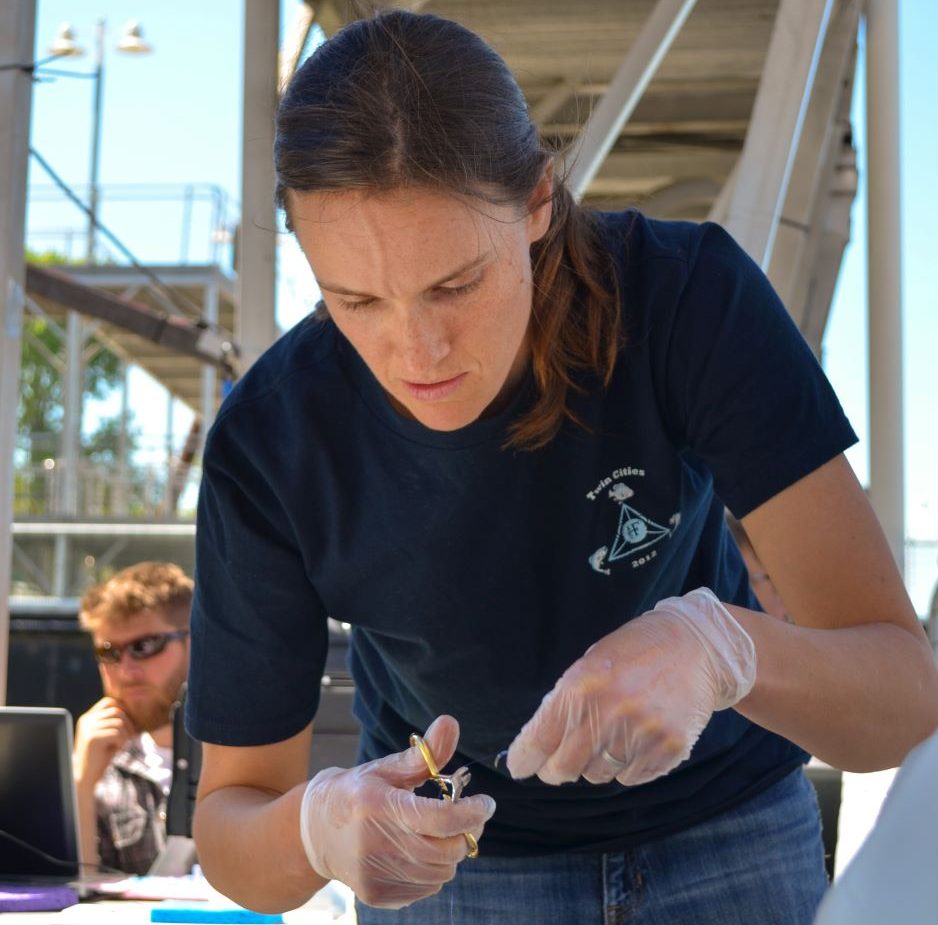How Fish Surgery Leads Research and Saves Pets
 Graduate student performs fish surgery (Credit: USACE HQ, Public Domain)
Graduate student performs fish surgery (Credit: USACE HQ, Public Domain)For fish scientists and veterinarians specializing in aquatic species, fish surgery is a complex part of their daily work. As opposed to anglers fileting fresh catches, researchers and caregivers have to be much more careful while handling their clients. It’s important, after all, to make sure that the animal doesn’t become too stressed or cause further harm during the procedure. Surgery that results in either place the life of the fish at risk.
There are several reasons a fish may need to undergo surgery. For domesticated pets, emotional attachment, cost of the fish or potential income losses for fish breeders are all considered in an owner’s decision to put their pet under the knife. Many aquariums, like the Vancouver Aquarium, prioritize preserving the species and would rather save the life of a fish already at the facility than replace it with a new catch. Researchers may also need to conduct surgery to install PIT tags or simply to understand their subject more deeply; such information can help curate conservation strategies and resource management techniques that help the studied species.
How is Fish Surgery Done?
In all of these scenarios, preserving the life of the fish is one of the driving factors behind the surgery, making developing safe techniques even more important. To prevent unnecessary movement, fish slated for surgery are sedated, much like people, dogs and cats are, according to Aquatic Veterinary Services. During the surgery, the fish may be either partially submerged in water to preserve access to oxygen or receive water through a ventilator tube—the water delivery method depends on what kind of surgery the fish is undergoing.
Types of surgery can range from simple external procedures to more complicated internal abdominal surgery. For external treatments, the fish is held partially underwater while the operating area is exposed for surgical access. However, if a fish’s abdomen needs to be examined, then the procedure will require the fish to be removed from the water entirely. For these internal surgeries, one of the attending physicians or researchers provides oxygen to the fish through a tube in the fish’s mouth, similar to how a ventilator functions for humans.
Why Conduct Surgery?
If the owner or researcher is attached to the species, then any number of conditions and ailments may prompt the need for surgery. Fish may also undergo surgery as researchers install tags that can help track individual specimens. PetPlace outlines six common reasons aquatic patients end up on the operating table. Surgery may be the necessary treatment for:
- Removal of masses
- Treatment of lacerations
- Removal of eggs in an egg-bound fish
- Damage to the eye or an infection
- Buoyancy issues caused by a malfunctioning swim bladder
- Liver and kidney tissue sampling
Conclusion
There are many other reasons that fish may be deemed a candidate for surgery. Sometimes the surgery is simply investigative in order to learn more about the examined species, while other procedures may be conducted to save the life of the fish. Regardless of the reason, fish that are selected for surgery deserve to receive the same level of care that other pets and terrestrial creatures are afforded.



0 comments